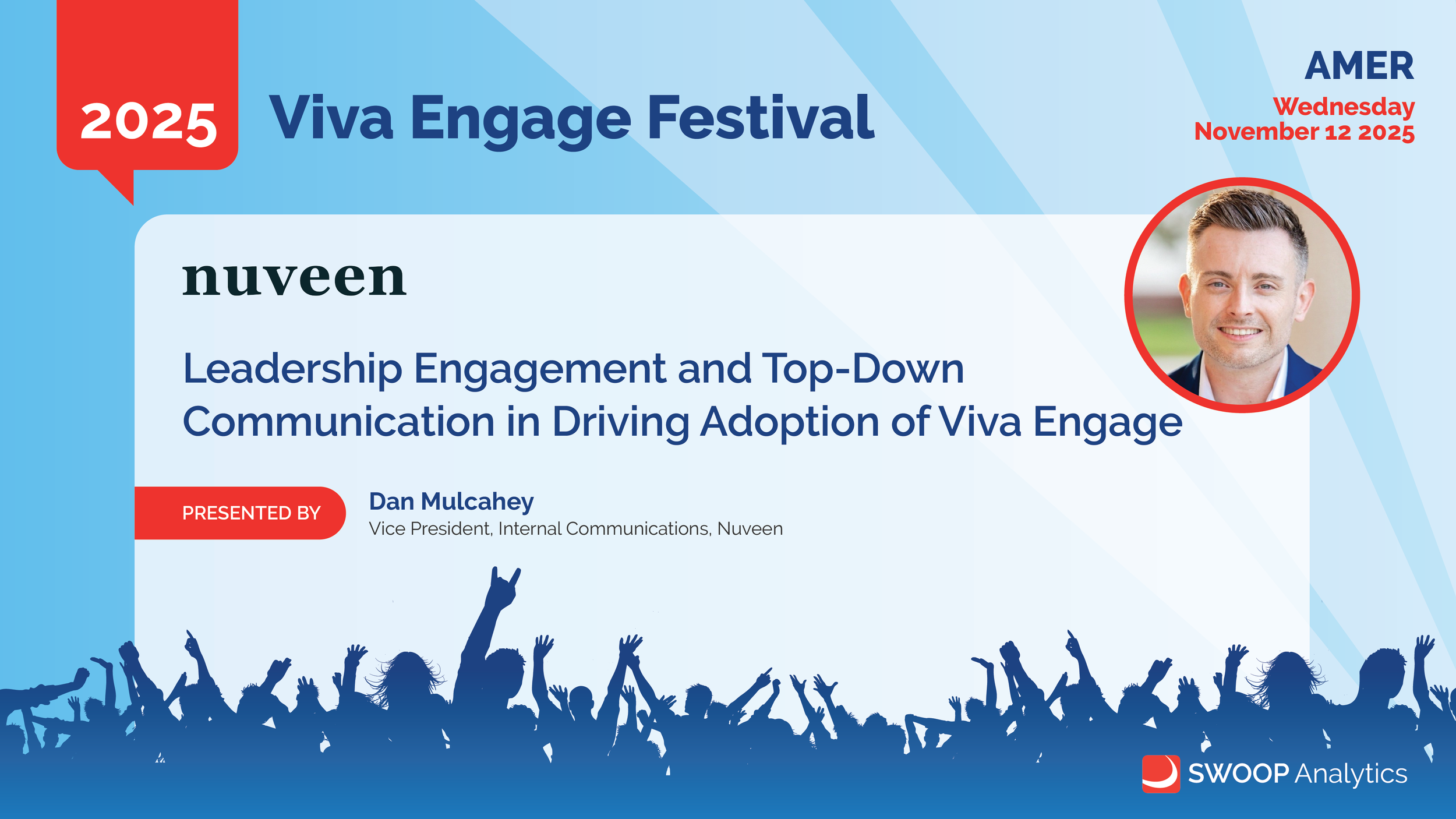From insights to impact: Building high-engagement communities through data, dialogue and daily wins.
What this session was about
Shailesh shared how Schneider Electric turned one of their biggest internal communities into a top performer globally by treating Viva Engage as a strategic engagement engine, not a posting wall. They used data, surveys and constant iteration to lift employee interaction across a complex, global organisation.
-
Key Messages
Start with real audience insight. Before posting anything, Schneider ran a survey to understand what employees wanted. Topics, formats, channels, pain points.
Noise is the #1 barrier. Employees felt overloaded and confused by multiple channels. This guided Schneider to simplify and streamline.
Use data to define a clear engagement problem. Schneider set a bold 20% engagement lift goal, based entirely on analytics, not guesswork.
Leadership involvement is a game-changer. A simple formula (SWOOP’s favourite) 1 post, 2 comments, 3 likes dramatically increased reach and legitimacy of conversations.
Campaign-style content drives momentum. Internal blogs, people stories, and business milestones (like their 100-year product anniversary) created spikes in interaction.
Consistent community management matters. Fast replies, nudges, and monitoring prevent drift and keep conversations healthy and purposeful.
What you can take from this
Use surveys to find out what employees value.
Define an engagement goal (and measure against it ruthlessly).
Coach leaders on small, sustainable actions that grow reach.
Run “campaigns”, not random posts.
Treat community management like a role, not a hobby.
Meet the speaker:
Shailesh Kumar
General Manager, Communications Performance Management






